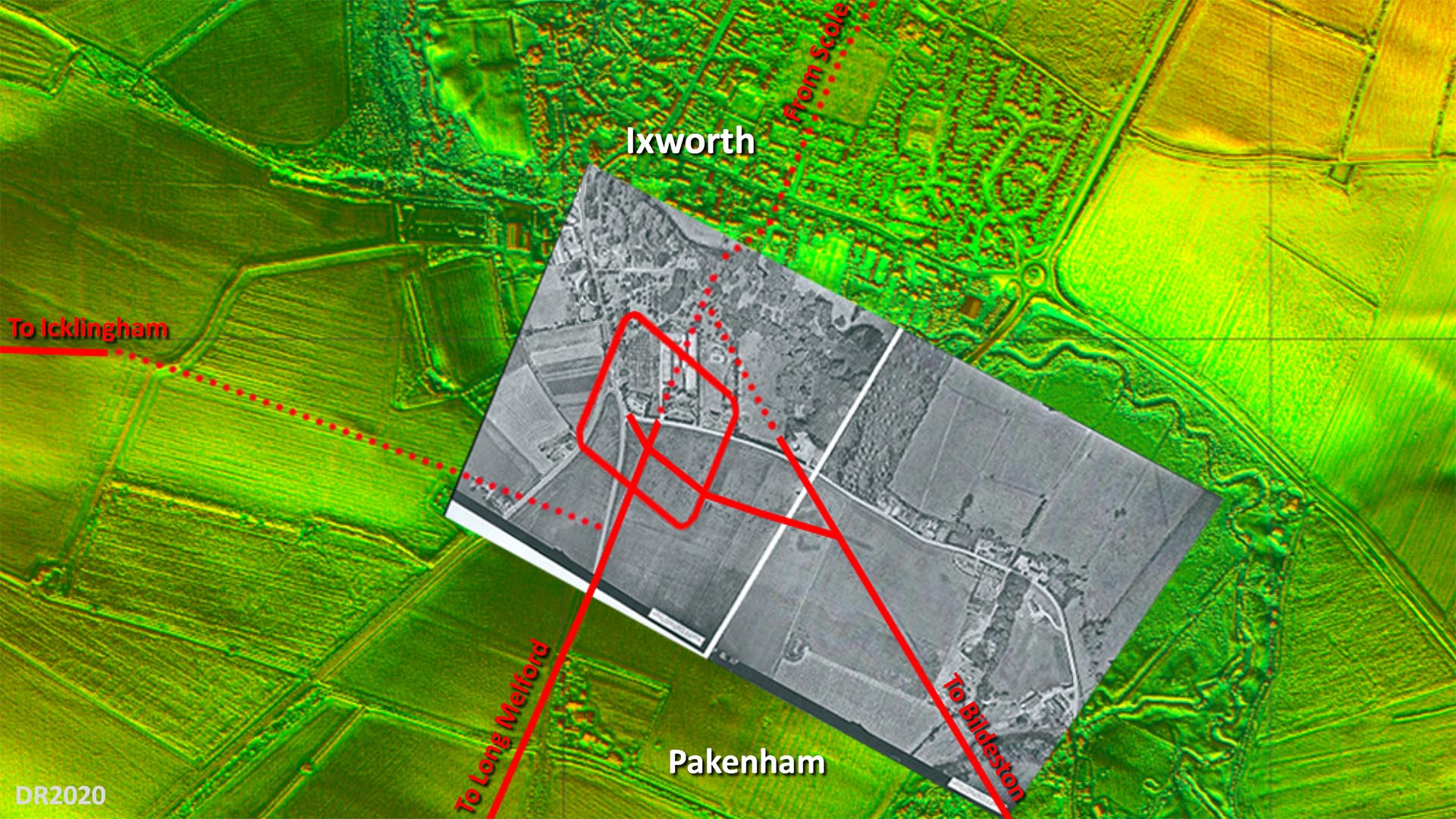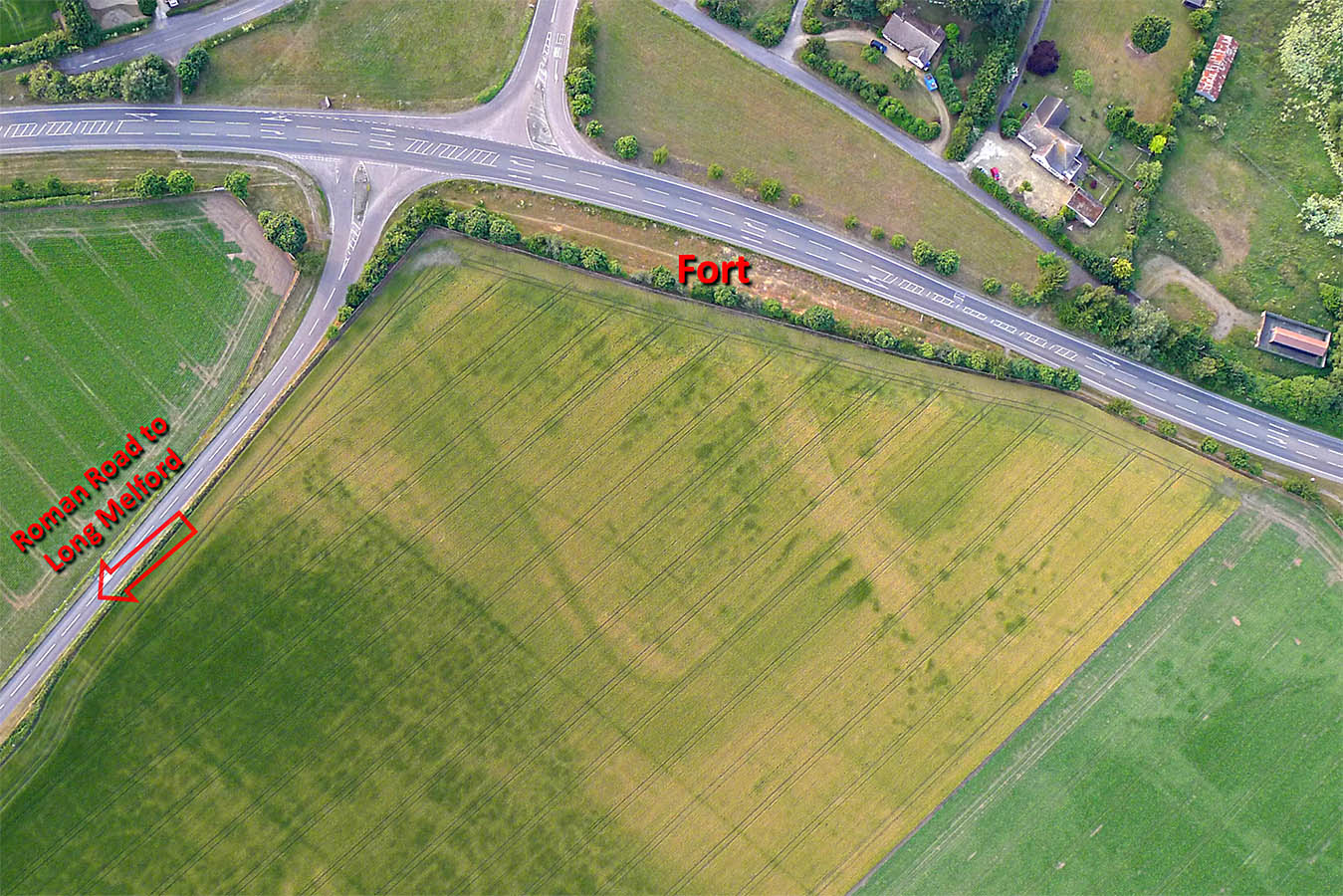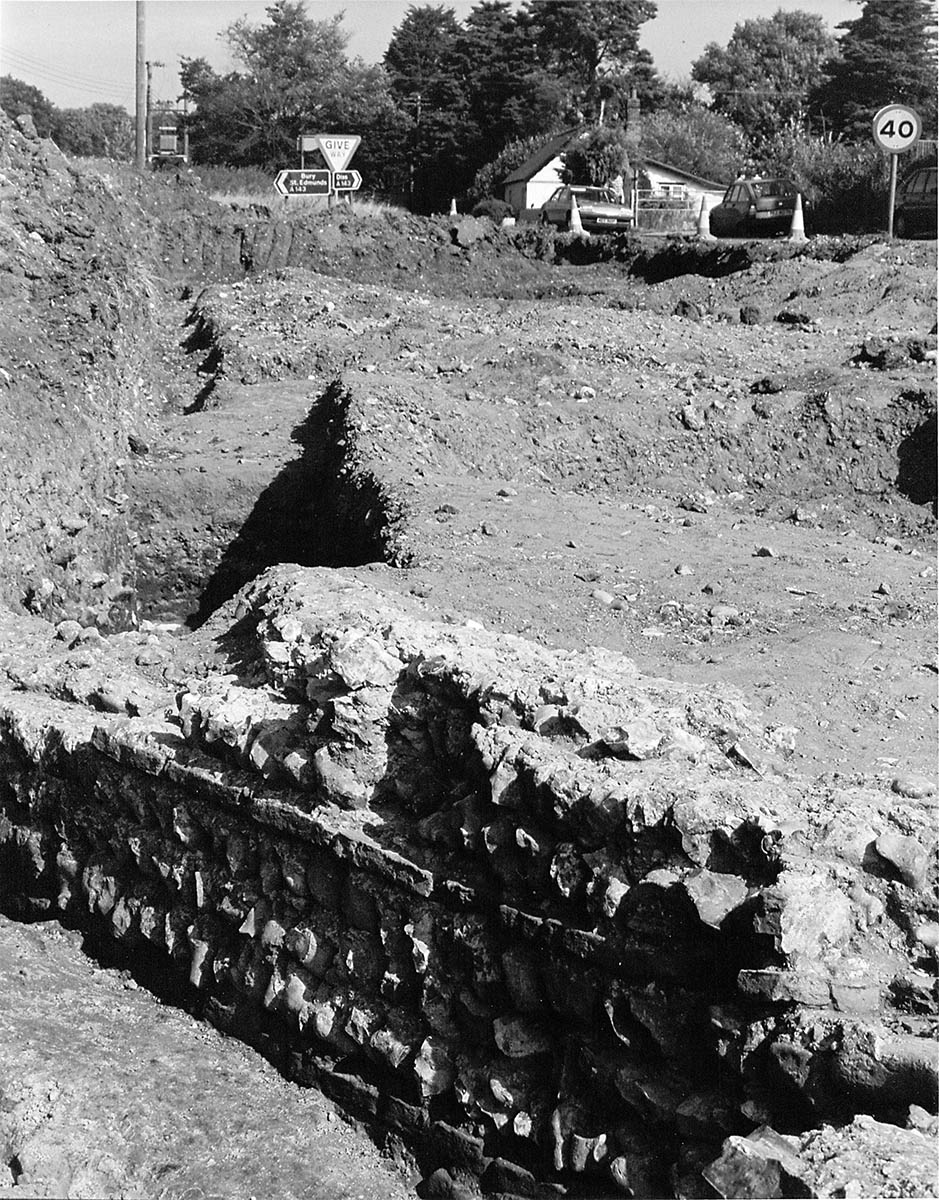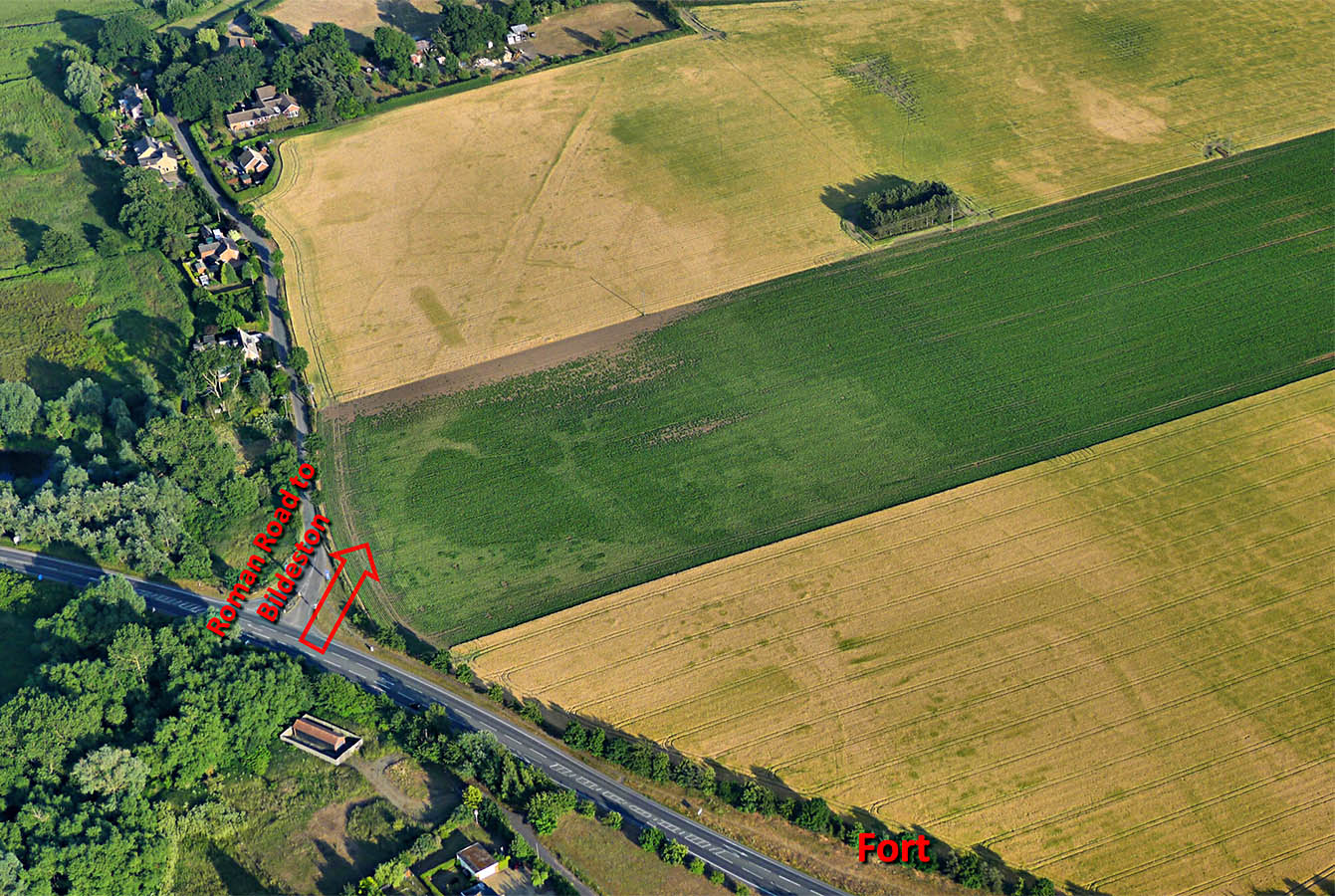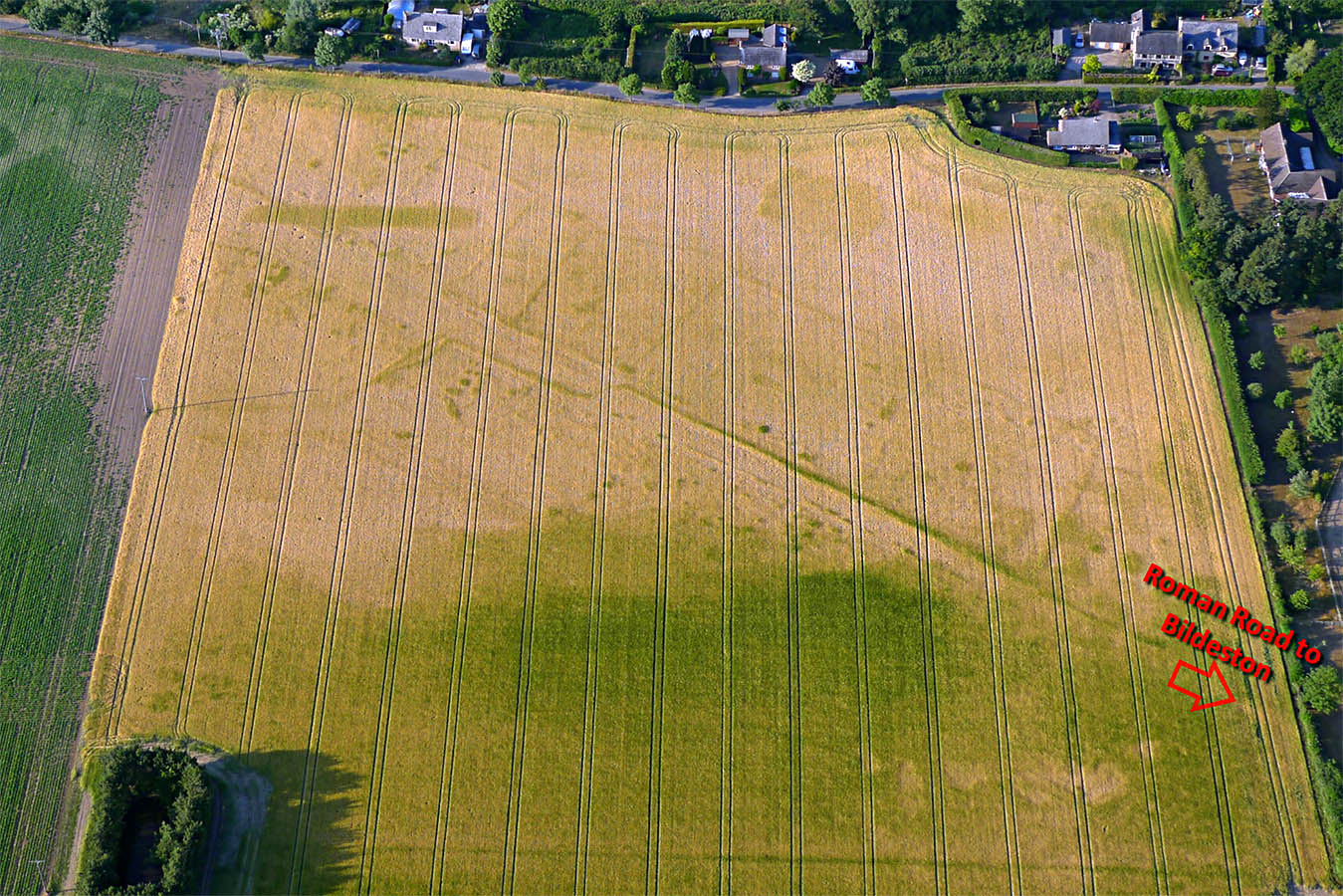
|
Ixworth - Pakenham Roman SiteRoman Name: SitomagusWe now know the Roman Town at Ixworth-Pakenham was called Sitomagus - the itinerary IX distance fit exactly. Most of what is known about the site is from aerial photography and rescue excavations before the construction of Ixworth Bypass in the 1980s. South of the river (Black Bourn) is Pakenham parish, north of the river is Ixworth. The Suffolk HER records finds both north and south of the river so both parishes can claim identity. To the east of the fort is Mickle Mere - proximity to water seems to be a common feature for Roman sites in East Anglia. The Roman town is believed to have evolved from an early fort on the Pakenham side of the river. This would have had a short life being replaced by a civilian settlement. Suffolk HER IXW004 records a bath house, hypocaust and villa alongside Stow Lane (Ixworth Parish). Thanks are due to Steve Wilson for freely supplying his excellent aerial photographs. Suffolk HER has several relevant entries including: PKM 003, 005, IXW 004, 005, 028, 033.
|
Historic Counties: Suffolk Current Counties: Suffolk HER: Suffolk
|
|
|
|
|
|
|
|
|
Last update: May 2020 |
© David Ratledge |


